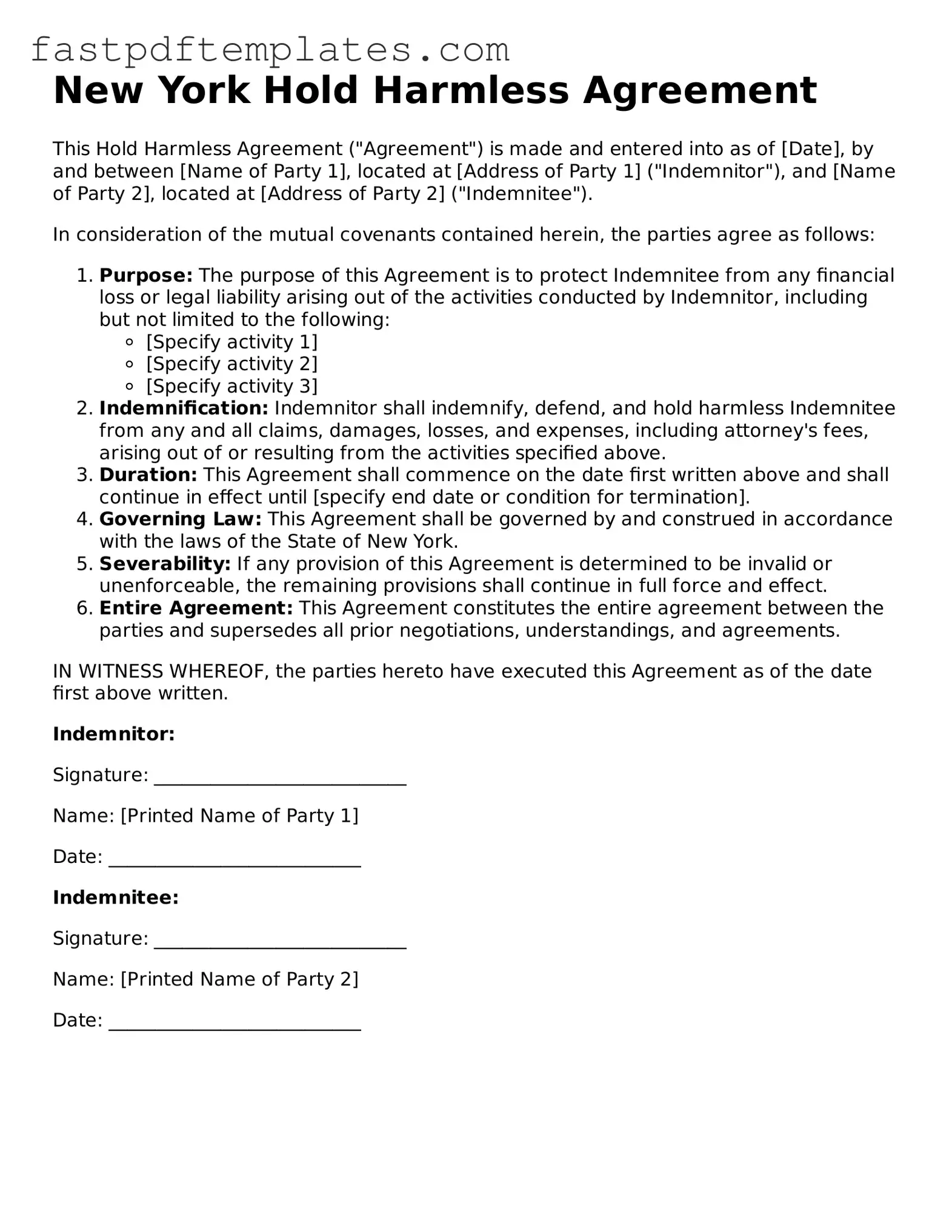The Indemnity Agreement is similar to the Hold Harmless Agreement in that both documents are designed to protect one party from financial loss or liability. In an Indemnity Agreement, one party agrees to compensate another for any losses or damages incurred. This can include legal fees or settlement costs resulting from a claim. Both agreements aim to allocate risk, but an Indemnity Agreement often involves a promise to pay rather than just a promise to hold harmless.
The Liability Waiver is another document that shares similarities with the Hold Harmless Agreement. A Liability Waiver releases one party from liability for injuries or damages that may occur during an activity. While a Hold Harmless Agreement focuses on protecting one party from claims made by others, a Liability Waiver is primarily concerned with preventing claims from participants themselves. Both documents serve to limit liability but target different aspects of risk management.
The Release of Liability is closely related to the Hold Harmless Agreement, as it also seeks to protect one party from legal claims. In a Release of Liability, an individual agrees not to hold another party responsible for any injuries or damages that occur. This document is often used in recreational activities or events. Like the Hold Harmless Agreement, it emphasizes the importance of informed consent and understanding the risks involved.
The Non-Disclosure Agreement (NDA) differs in purpose but shares the principle of protecting one party from potential harm. An NDA prevents the sharing of confidential information, thereby safeguarding a business's interests. While the Hold Harmless Agreement focuses on liability, both documents aim to create a secure environment for parties to engage without fear of repercussions, whether financial or reputational.
The Service Agreement can also be compared to the Hold Harmless Agreement. A Service Agreement outlines the responsibilities and expectations between parties involved in a service arrangement. Often, it includes indemnification clauses similar to those found in Hold Harmless Agreements. Both documents establish clear terms to protect parties from liability arising from their contractual relationship.
The Rental Agreement often contains provisions similar to the Hold Harmless Agreement. In rental situations, landlords may include clauses that protect them from liability for injuries occurring on the property. This mutual understanding helps clarify responsibilities and risks, ensuring that both parties are aware of their rights and obligations regarding potential claims.
The Partnership Agreement is another document that can bear similarities to the Hold Harmless Agreement. In a partnership, parties may agree to indemnify one another for losses incurred due to the actions of one partner. This helps manage risk within the partnership structure, similar to how a Hold Harmless Agreement aims to protect one party from claims made by third parties.
The Employment Agreement may also incorporate elements akin to the Hold Harmless Agreement. Employers often include indemnification clauses to protect themselves from claims made by employees related to their job duties. This serves to clarify the responsibilities of both the employer and employee, ensuring that both parties understand their liability and protections in the workplace.
Finally, the Construction Contract frequently includes provisions similar to those in a Hold Harmless Agreement. In construction projects, contractors and clients may agree to indemnify each other against claims arising from accidents or injuries on-site. This mutual protection fosters a safer working environment and helps clarify liability among all parties involved in the project.
